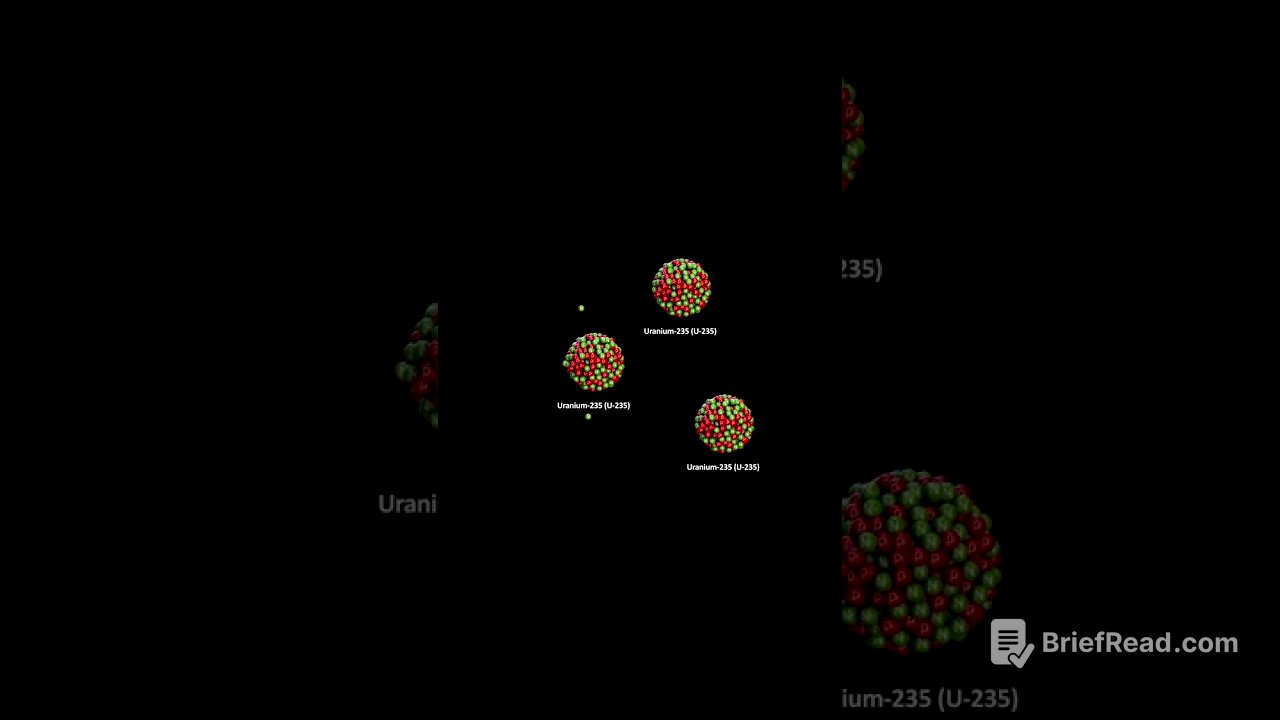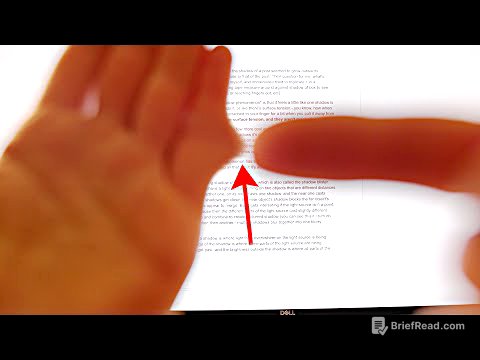TLDR;
The video explains nuclear fission, a process where a large nucleus splits into smaller nuclei when struck by a particle, typically a neutron. This process releases energy due to the conversion of missing mass into energy, as described by E=mc². Certain isotopes like uranium-235 and plutonium-239, when bombarded with neutrons, release additional neutrons, leading to a chain reaction if sufficient fissionable material is present. This chain reaction is the principle behind atomic bombs.
- Nuclear fission involves splitting a large nucleus into smaller ones.
- Energy is released due to mass conversion (E=mc²).
- Chain reactions occur when released neutrons cause further fission events.
- Isotopes like uranium-235 and plutonium-239 are key to these reactions.
- Atomic bombs utilise uncontrolled chain reactions.
Introduction to Nuclear Fission [0:00]
Nuclear fission occurs when a large nucleus, such as uranium-235, is struck by a neutron, causing it to split into two smaller nuclei. If the combined mass of these smaller nuclei is less than the original uranium nucleus, the missing mass is converted into energy, following Einstein's famous equation E=mc². This process is fundamental to understanding how nuclear energy is released.
Chain Reactions with Uranium and Plutonium [0:21]
Isotopes like uranium-235 and plutonium-239 undergo a specific type of fission. When these isotopes are hit by a neutron, they not only split into smaller nuclei but also release three additional neutrons. If there is a sufficient concentration of fissionable nuclei, these released neutrons can then strike other nuclei, causing them to fission and release even more neutrons. This creates a self-sustaining chain reaction.
The Mechanism Behind Atomic Bombs [0:32]
The chain reaction described is the core mechanism behind atomic bombs. If enough fissionable material is present in a high enough concentration, the initial fission event can trigger a rapidly escalating series of fissions. Three neutrons released can cause three more nuclei to fission, which in turn cause nine, then 27, and so on. This exponential increase in fission events releases a tremendous amount of energy in a very short time, resulting in a nuclear explosion, as seen in the atomic bombs dropped on Hiroshima and Nagasaki during World War II.









